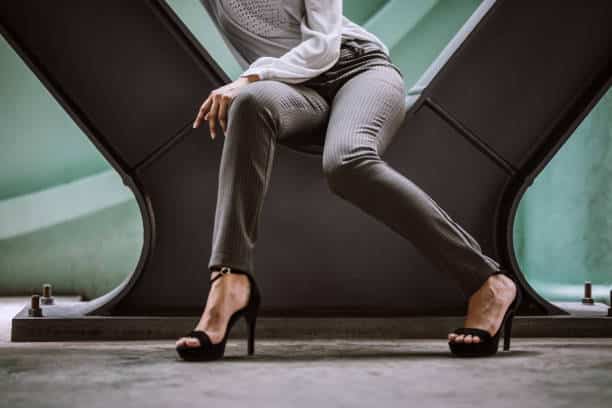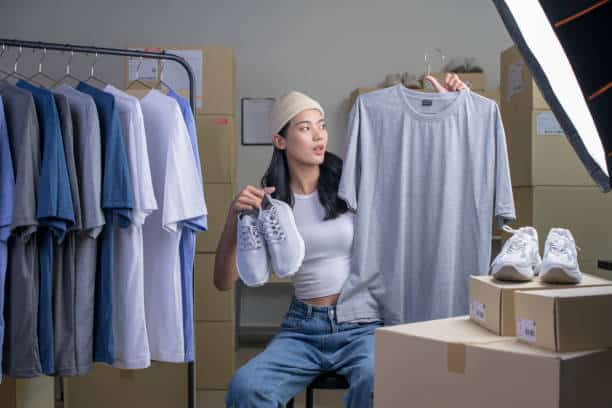Women’s dress pants are ready-to-wear garments, perfect for the working woman; a power suit, a wedding or any business related occasion. A great dress pant is one that completes an outfit, gives confidence while an inferior dress pant will do the exact opposite. So, what’s the trick to successfully pulling off dress pants? Look no further than tailor perfect dress pants fit.
This article will help you understand all the basics that you would ever need to find out about dress pants and their perfect fitting for women. From learning what cut to go for and proper fit around the waist, hips and thighs to right fabric for dress pants, this article will make you stop guessing when it comes to purchasing dress pants.
1. Understanding Body Types and Dress Pants Fit
A necessary prerequisite for talking about how dress pants should fit is the fact that women of different body types exist. Although there is no rule on how to find the Best Fit, the following guidelines would assist you find the perfect fit depending on your size.
- Hourglass Figure: Most hour-glass shaped women are blessed with an average or large bust and hips surrounded with a thin waistline. Pants or trousers that are figure hugging, are fitted at the waist and have a slight flare make your curves look proportionate.
- Pear-Shaped Body: If you’re curvy, and you have more weight on your hips and thighs, or you simply prefer wider hips, wide-leg or straight-leg pants will do you good. Choose pants that are mid-waist and perfectly fitting to hug your curve without hugging your hips and thighs too tight.
- Apple-Shaped Body: Apple shaped body built women are normally characterized with larger upper parts of the body including the belly and bust with skinny thighs. Avoid pants that can hug the belly area due to tight sewn waist bands. Wide-leg pants worn high-waisted contribute toward the impression of the idealistic slimming silhouette and provide a proportionate appearance.
- Athletic or Rectangular Body: However, if you are tall, quite thin and carrying little extra weight around your tummy, you can introduce shape with a pair of pleated trousers, or trousers with the narrower cut at the bottom. This is the reason you should search for pants that will be worn at the hips to accentuate the curvilinear figure.
2. Key Areas to Focus On for the Right Fit
The perfect pair of dress pants should hit all the right notes in several key areas: the waist, hips, thighs, rise, inseam, and the width of an opening for the legs. Here is a dissection on how those should look for ease and aesthetic purposes: The best look.
Waist: Snug but Comfortable
- The dress pants you wear should be able to fit at your true waist height, not low or high. For high-waisted dress pants, this will be about your belly button, while mid-rise pants should be lower around your hips or hip bones.
- It should not sit low and tight around your waist that effectively gives you that unsightly spare tire or muffin top look. However, it should not be too free, make the pants droop or fall regularly and you need to keep pulling up.
- They should have a stretchable waistband if you are going to have to wear the pants for long periods of time.
Hips: Smooth and Tailored
- The density of the fabric at your hips should not tighten or loosen around your waist. This is too tight if, when worn, the fabric seems to pull taut across the hips or if horizontal lines are discernible or wrinkle.
- On the other hand, if in addition to that you had excess fabric gathering around the hips or back side than the pants were excessively big and needed to be altered.
Thighs: Slim, but Not Constricting
- Suit trousers should not be overly tight through the thigh area but should not be loose in the least as it will restrict your every move. If a fabric is pulled, if there are wrinkles or lines remain if you sit down, or if you feel constricted when you sit or even walk, the pants are too tight.
- It is also important not to have overly baggy thighs, this would not look good, in general appearance. A straight or slightly tapered cut is probably the best when you aim to have tidy and or neat hair.
Rise: High, Mid, or Low
- The increase in dress pants concern distances; it means that the space between the crotch seam and the waistband has increased.
- High waisted pants give tall women a lean height and slimming look while also being perfect for women who want to accentuate their waists. These can be great especially if the woman has a pear shaped or hourglass figure.
- There are two types of pants that are considered to be suitable for wearing suits: mid-rise pants are the most popular and universal. It tends to suit most body types well making them perfect for those who want both comfort and flair.
- Low-rise pants are less common for dress pants, but some women may want them because of comfort when wearing trousers. But they are deemed unsuitable for the working environment.
Inseam: Full-Length or Cropped
- There are two things that can dramatically influence a dress pant size: the inseam, which is equal to the length of the pant leg.
- Your full-length dress pants should barely brush the tops of your shoes and end exactly where the shoe starts when crossed at the front, if there’s a tiny split of the cloth at the front where the foot rests, it is also perfect. If pants are too short they make the wearer look shorter, and if pants are too long then they can look really casaul.
- Jeans that are cropped should be cropped to the top of the wearer’s shoes. They can be elegant and practical footwear, which will be appropriate for warmer weather or office wear with a relaxed dress code.
Leg Opening: Slim, Straight, or Wide
- Slim leg dress pants are well fitted and form a neat silhouette kind of trousers. They are ideal for today’s sleek dressing ensembles and ideal for women who would like to achieve a fitted look.
- Straight-leg pants are one of the least controversial and the most universally flattering pants options out there. From the hip to the ankle they have the same width.
- If done correctly, wide-leg pants can look amazing since it helps women with wider hips and others who want to even out their lower body. These pants flared it out and made it have so much more body and a little more sophisticated.
3. Choosing the Right Fabric for the Perfect Fit
It is also important that the type of fabric used in your dress pants is the best there is. It should enhance the body size, be comfortable and durable enough to withstand the necessity of frequent ironing throughout the day.
Wool and Wool Blends
Wool is a traditional, long-enduring fabric, very suitable for dress pants. It’s quite strong and does not wrinkle easily and has a hang which looks good on almost anybody. Superwash wool is a great option, and wool with blends like polyester and spandex will have a slight stretch for more comfort during the wear and to help with movement.
Cotton and Cotton Blends
Cotton is light and comfortable; it’s suitable for tropical regions or business casual, business pant wear. Elastane is also used a lot in blends with cotton to enhance stretch and fit to the clothes. But scratchiness is lower in the same breath, that is why cotton can be wrinkly and could need more care during usage.
Polyester
Polyester is a widely used fabric material since it is cheap, soft in nature and resistant to wrinkles. Modern dress pants feature polyester blended with other fabrics like wool or spandex to make the fabric effective and fabulous.
Spandex/Elastane Blends
It is for this reason that pants containing a little spandex or elastane are more preferred than rigid pants. These fabrics are normally close fitting in order not to constrain the body’s curves. For a medium structured fabric look for blends that are under 5%, while for a more structured look, the elastane should be below 2 percent.
4. Tailoring: The Key to the Perfect Fit
Even the best off-the-rack dress pants may not fit perfectly right away. Tailoring can be your secret weapon in achieving that custom fit. Common alterations include:
- That makes choosing the right piece a slightly daunting task, but having your dress tailored can be your secret weapon in achieving that perfect fit. Common alterations include:
- Justering to maintain height of the pants for that desired length; whether it is a full length or a cropped look.
- Adjusting the pant’s waist if the rest of the pants’ fit perfectly including the circumference, but are a little loose around the beltline.
If you are to buy dress pants, it is advisable to get them a size larger since it is always easier for a tailor to alter their pants to fit the body as compared to having them made loose.
5. Styling Tips for Dress Pants
Now that you know what dress pants fit you perfectly, the next stage is how to wear them. Here are a few tips to keep in mind:
- Slim-leg pants should be worn with tailored tops referring as much as it to the elegance of the business look. While pulling in your shirt can put emphasis on your waist to bring out a smarter look.
- As for the trousers with a broad-legged cut, they are perfect with better-fitting tops or blouses. This helps to maintain the balance and does not let you overreact from the sheer quantity of the fabrics.
- Cropped pants may be paired with high heels or flats, it actually depends on your preference. Heels make you look taller, while flat shoes offer a consolation look that is casual.
- There are some general rules which are worth examining when it comes to choosing dress pants style; these are the occasion. Tailored pants with a very loose cut, made from a rich fabric can be appropriate for formal occasions or big ceremonies, while slim or straight-cut pants are more suitable for businesslike occasions.
Conclusion: Finding Your Perfect Pair of Dress Pants
There really is a pair of dress pants that is ideal for every figure and every person, all you have to do is decide on the cut, the material, and the design that flatters you most. Make sure you focus on the areas around the waist, hips, thighs, and rise because these aspects are critical in defining your figure and providing comfort all day long. By using these tips, no one has to buy dress pants that don’t fit or feel good again.




